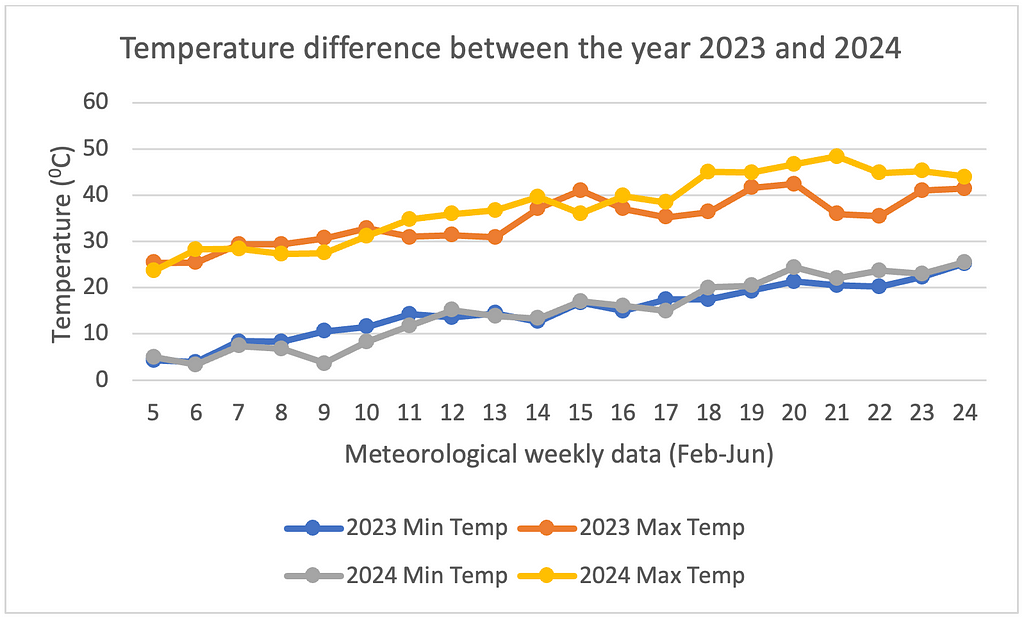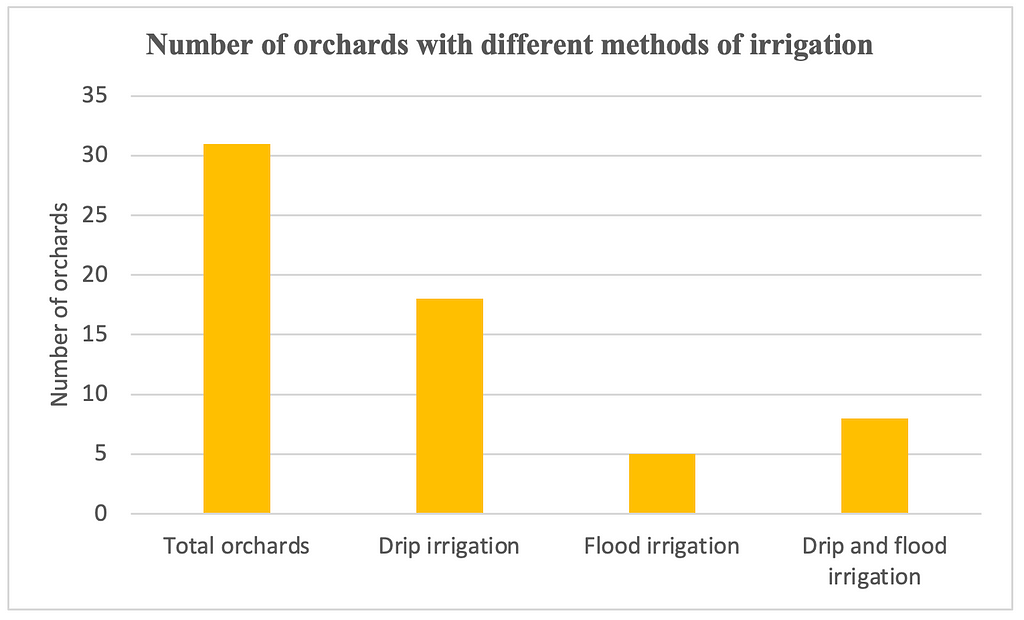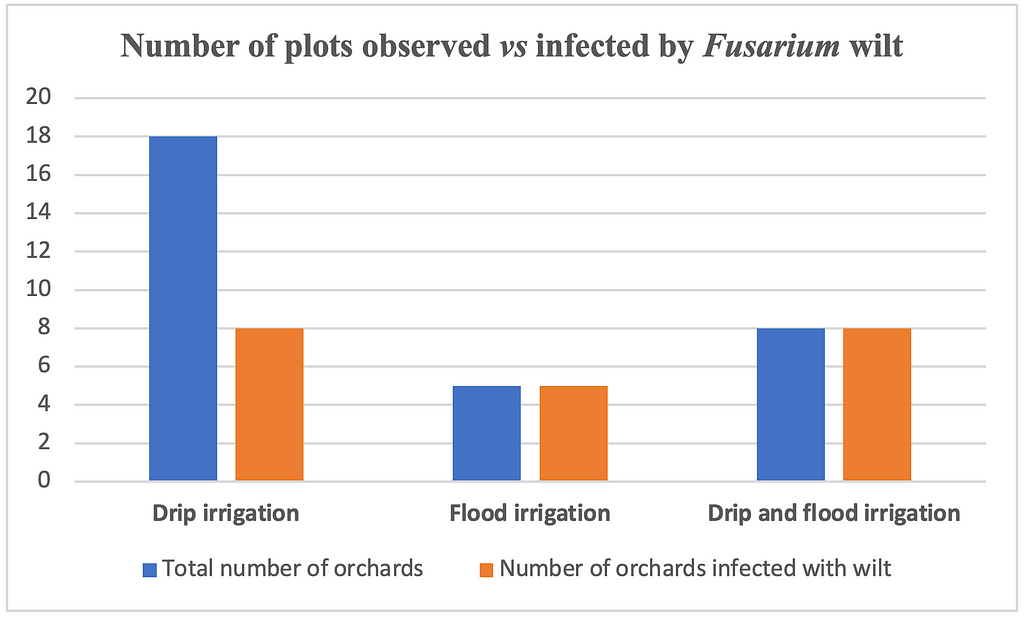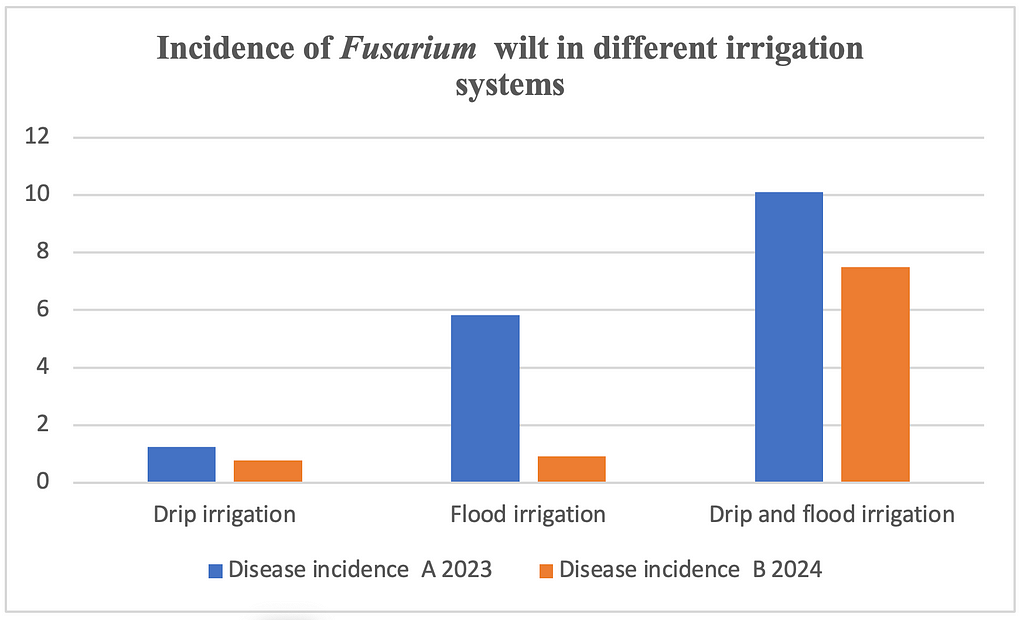How to manage dry root rot of citrus | Symptoms, life cycle, case study and management of dry root…
How to manage dry root rot of citrus | Symptoms, life cycle, case study and management of dry root rot
Introduction
Citrus is one of the world’s most important cash crops, with India ranking as the third-largest citrus producer globally, following China and Brazil. In India, citrus cultivation is predominantly found in Maharashtra, Punjab, Haryana, Madhya Pradesh, Assam, Rajasthan, Meghalaya, Karnataka, and West Bengal. However, citrus production is frequently hampered by dry root rot (DRR), a disease caused by a complex fungi among which the soil-borne fungus Fusarium solani is the major pathogen responsible. This fungus is prevalent in nurseries and orchards results in considerable yield loss, nutritional value and market qualities and acts as a weak pathogen that only infects citrus trees under stress.
Symptoms of Dry Root Rot
The effects of dry root rot are typically observed in the upper parts of the citrus tree before the roots show signs of decay. The disease is marked by yellowing and dropping leaves, leading to twig dieback. It takes about two to three years from the time of infection for wilt symptoms to become noticeable. In advanced stages, the foliage becomes sparse, and the tree eventually dies. Often, this collapse happens after a period of prolonged heat, occurring so rapidly that the tree dies with its leaves still attached.
Occasionally, an affected tree may survive for years, with one side showing dead and defoliated twigs while the other side appears almost normal. Careful examination of the roots of such trees often reveals that, even if the lower trunk remains uninjured, one or more main roots are in poor condition. The bark decay usually begins below the soil level, and during the early stages of decay, the root bark is moist and easily separates from the wood. In the advanced stages of the disease, the bark on one side of the crown is typically decayed, affecting the base of the main roots on the same side. The wood under the bark of all affected parts becomes hard, dead, and light brown in colour.

Life cycle:
The primary source of infection is by chlamydospores or as mycelium in the soil. The pathogen enters hosts through developing roots, where it can infect the host. After infection, F. solani produces asexual macroconidia and microconidia, which are dispersed through irrigation water and implements.
Predisposing factors:
Abiotic factors:
- Water stress: The disease can spread across the field due to water stress, which makes the plant more susceptible to infection by Fusarium spp. However, the pathogen can also colonize roots without stress, leading to an asymptomatic infection. Fusarium spp. depletes the tree’s starch reserves under stress conditions. Factors such as poor drainage, excessive irrigation, and poor aeration can increase the likelihood of Fusarium spp. infections in citrus trees. Trees experiencing environmental stress have a higher incidence of root rot disease compared to those growing without stress. Additionally, trees weakened by frost are more prone to infection by F. solani
- Climate: The climate significantly influences disease dispersal. A study by Ippolito (1992) indicated a peak in the disease between May and July, likely due to rising temperatures. The pathogen population may also increase with root activity, beginning in May and ending in November. Abundant nutrients in the roots can stimulate pathogen growth and provide a suitable substrate for its proliferation.

Biotic factors: The disease worsens with biotic factors like Phytophthora spp., citrus tristeza virus (CTV), or attacks by pests such as nematodes (e.g., Tylenchulus semipenetrans Cobb), rodents, and insects as that may provide entry sites for dry root rot.
Case study:
A small survey was conducted in the Abohar region of Punjab and parts of Haryana to assess the incidence of Fusarium wilt among orchards using different irrigation methods. The survey covered 31 orchards: 18 using drip irrigation, 5 using flood irrigation, and 8 using a combination of both methods. The findings revealed that out of the 18 orchards with drip irrigation, 8 were infected with Fusarium wilt, with a percent incidence of 1.24%. In contrast, all the orchards using flood and mixed irrigation methods showed symptoms of Fusarium wilt, with percent incidences of 5.83% and 10.10%, respectively, in the year 2024. Furthermore, it was noted that the incidence of Fusarium wilt increased across all irrigation methods in 2024 compared to 2023. Analysis of weather data for the region indicated that 2024 experienced a prolonged period of high temperatures, which likely facilitated the spread of the Fusarium pathogen, leading to increased wilting of the trees. Furthermore, studies like identification of the resistant root stock and species identification are needed for the effective management of Fusarium wilt.



Integrated Disease Management
The management of dry root rot in citrus primarily relies on an integrated control approach. This strategy includes various measures such as eliminating stress factors that predispose citrus trees to sudden death and carefully selecting sites with good surface drainage. Irrigation should be managed meticulously, ensuring neither too much nor too little water. Proper drainage is crucial, as water should not be allowed to remain in contact with the tree crown. Equipment movement, which can spread the pathogen, should be conducted carefully, with thorough cleaning before moving between orchards. Once the wilt disease is detected in the orchard, dig the 3–4 feet long and deep trench between healthy and diseased/wilted plant.
Proper fertilization is essential to minimize the disease; both excessive and insufficient nutrient application should be avoided. Rodent control, as well as careful use of herbicides and other chemicals, will also be beneficial. Sanitation is important keeping the immediate environment of infected and wounded trees clean and dry helps to reduce or prevent pathogen transmission. It is not recommended to remove infected trees in the early stages as there is chances to recover, but it should be considered in advanced stages.
Application of 10 kg of neem cake followed by soil drenching with 0.5% Trichoderma viride formulation or 0.2% copper oxy chloride in the early stages of infection helps in reducing the disease intensity. The disease is effectively checked if the tree basin is drenched with 0.1% Carbendazim, (1 g of Carbendazim per litre of water) followed by another drenching of 0.25% Mancozeb (2.5 g of Mancozeb per litre of water) or 0.2% Chlorothalonil (2g of Chlorothalonil per litre of water) or propiconazole 1 mL/L, 12–24 hours after irrigation, at monthly intervals. 3–4 litres of each chemical fluid per plant followed by light irrigation.
Soil solarization or formalin should be used to disinfect such pits after removing the diseased (wilt affected) plants. Dig a pit 1 foot deep and 2x2 feet wide where the trunk was removed. Prepare a formaldehyde solution (37–41% formalin), mixing half a litre with 10 litres of water per pit. Make the solution at the site and pour it immediately. Before starting, one should cover whole body, use mask, gloves and eye protection as formalin is poisonous to humans. After mixing the formalin with water, pour it into the pit, then cover it with plastic and soil to prevent vapor from escaping. Keep the pit covered for one week. Afterward, remove the plastic and rake the soil for 10–15 days until the formalin smell is completely gone. The pit will then be ready for planting new saplings.
How Fyllo helps to manage dry root rot disease under field conditions?
Fyllo IoT devices assist farmers by delivering precise data on irrigation and fertigation, including optimal timing, quantities, appropriate fertilizers, and methods of application. Utilizing these devices helps to mitigate stress conditions which is favourable for the occurrence of the disease, thereby reducing the incidence and spread of dry root rot of citrus.
References:
- https://www.researchgate.net/publication/344441818_Scenario_of_Sweet_Orange_Dry_Root_Rot_and_Management_Practices_in_Telangana_-_An_Overview
- https://ucanr.edu/sites/eskalenlab/files/290795.pdf
- https://www.researchgate.net/publication/340515634_The_key_pests_and_diseases_of_citrus_trees_with_emphasis_on_root_rot_diseases-An_overview
- https://ikisan.com/ap-Citrus-disease-management.html
- https://www.researchgate.net/publication/340515634_The_key_pests_and_diseases_of_citrus_trees_with_emphasis_on_root_rot_diseases-An_overview
- https://nrcpomegranate.icar.gov.in/files/Advisory/86.pdf
